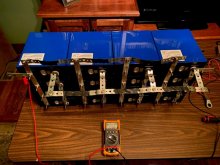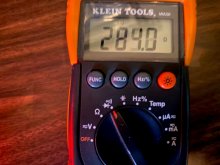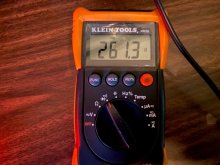I am top balancing my 16s pack in parallel using the power supply Will recommended. I am on day three and the pack is taking over 10 amps and all batteries are under 3.4 volts at their terminals. With the charger turned off I get continuity across the farthest distanced positive terminals at 0 ohms and the same for the negative terminals. However, when I turn on the charger I don't get continuity and the farthest distanced positive terminals have 261 ohms of resistance and the farthest distanced negative terminals have 284 ohms of resistance and no continuity. The negative connections are all pipe hanger. The positives are buss bars which are tied together with pipe hanger.
Is it normal to have such resistance and no continuity when charging? I'm wondering if the pipe hanger is not a great idea for charging at over 10 amps. It is not getting hot. Thanks for any advice. I hate to spend a week charging these batteries only to find I have a problem or even worse damage them.
BTW pack voltage was at 3.358 when I started the top balance. By my calculation that was over 90% charged.




Is it normal to have such resistance and no continuity when charging? I'm wondering if the pipe hanger is not a great idea for charging at over 10 amps. It is not getting hot. Thanks for any advice. I hate to spend a week charging these batteries only to find I have a problem or even worse damage them.
BTW pack voltage was at 3.358 when I started the top balance. By my calculation that was over 90% charged.







